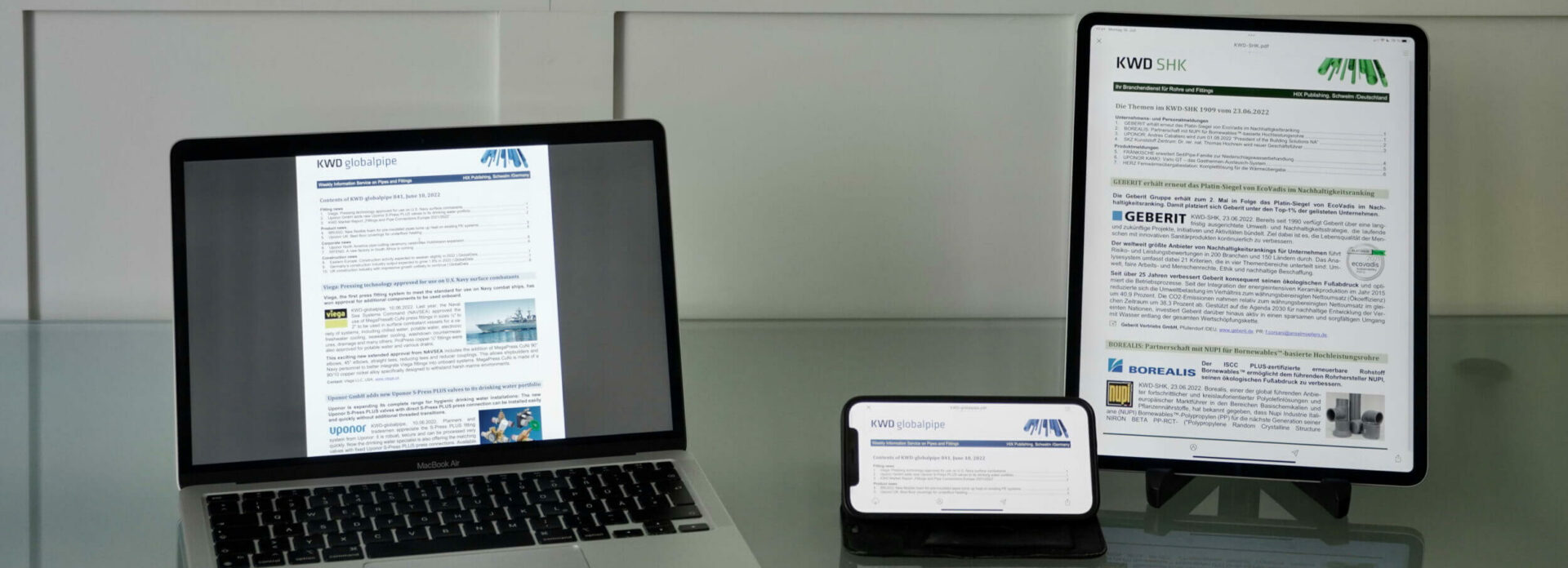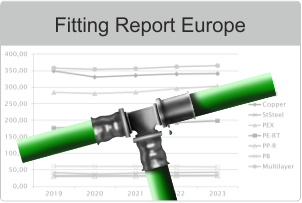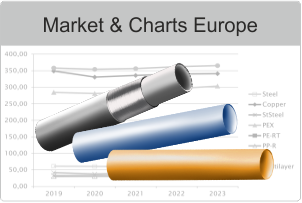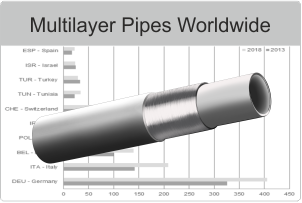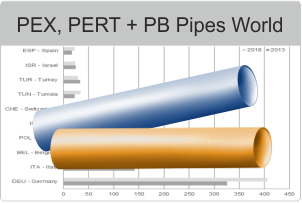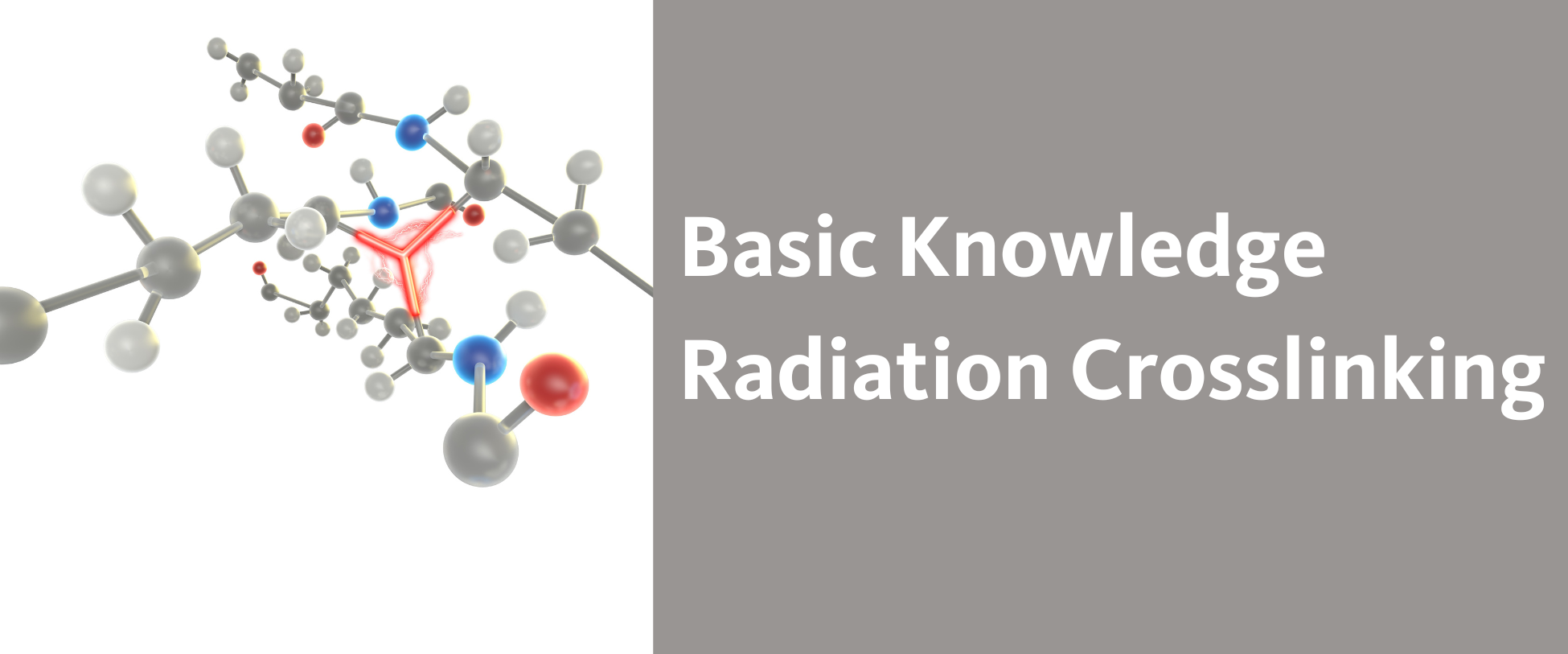
Radiation Crosslinking of PE-Xc plastic pipes – Beta-Gamma-Service GmbH &Co.KG
1. Improvement in the properties of plastic pipes through radiation crosslinking
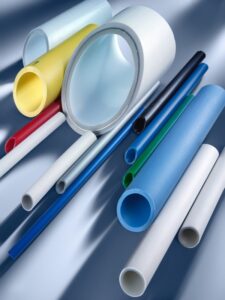
© Markus Steur
BGS, Beta-Gamma-Service GmbH & Co. KG, is one of the pioneers in the industrial application of accelerated electrons (beta rays) and gamma rays. Founded in 1981 in Wiehl near Cologne, the medi-um-sized company has shaped and co-developed pioneering radiation crosslinking and sterilization processes. Thanks to constant growth and a willingness to invest, the company, which is managed independently and privately throughout, is now Germany’s largest provider of irradiation services.
Plastic pipes are essential components of our modern infrastructure and permeate almost all areas of life. Compared to materials such as aluminum, concrete, cast iron, copper and steel, they offer great advantages due to their low weight, resistance to corrosion and chemicals as well as easy handling thanks to trenchless installation techniques. Plastic pipes as well as fittings and sleeves can be further refined using high-energy ionizing radiation: The thermal, chemical and mechanical properties of commodity plastics and engineering plastics can be improved by means of radiation cross-linking, so that the performance properties of the pipes are ensured over a very long period of time. The optimized creep behaviour at elevated temperatures and internal pressures is particularly important. In the case of shrink sleeves, resilience properties (memory effect) can be adjusted by radiation crosslinking.
Beta rays from electron accelerators with a maximum energy of 10 mega-electron volts (MeV) are usually used for irradiation. During the crosslinking process, the tube is passed through an electron beam. In this way, a homogeneously crosslinked pipe is created, which is now given the designation ‘PE-Xc’. The ‘X’ stands for “crosslinking”; ‘c’ indicates the physical method of radiation crosslinking. The result: the pipe refined in this way shows a lasting improvement in terms of heat resistance, resistance to chemicals, creep behavior and abrasion resistance. As a result, the pipe can be used under more demanding conditions with a significantly longer service life. Radiation crosslinking is a precisely controllable process. The desired material parameter can be set and exactly reproduced via the radiation dosage. Irradiation is a final process step for placing the products on the market.
Property improvements in detail
PE pipes have been radiation cross-linked for decades to ensure their performance properties. Of particular importance is their excellent creep rupture behavior at high temperatures and internal pressures.
In principle, two significant improvements in properties can be expected from radiation crosslinking of plastic pipes:
- Thermal: Improved temperature resistance and significantly improved mechanical properties at elevated temperatures.
- Chemical: The crosslinking of plastics significantly reduces solubility and swelling caused by solvents. Likewise, radiation crosslinking improves resistance to aggressive media and hydrolysis. This is reflected, among other things, in improved resistance to stress cracking and significantly reduced loss of strength after exposure to solvents.
Please also refer to the graphs at the end of this article.
2. Radiation Crosslinking or PE-Xc pipes and shrink products
Several million kilometers of radiation-crosslinked PE-Xc pipes have already been installed worldwide, often for over 30 years and in daily use under difficult conditions. The areas of application range from panel heating, industrial heating, cooling water, compressed air to water supply and other diverse indoor and outdoor applications.
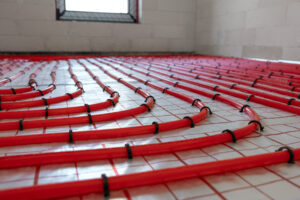
PE-Xc Rohre in der Fußbodenheizung ©Ronstik
Radiation crosslinking is carried out continuously after extrusion using fast, high-energy electrons. The cross-linking ensures that the steep drop known from pipes made of thermoplastic materials does not occur in the internal pressure creep test, especially at high temperatures of up to 95 degrees. In addition, the cross-linking makes the pipe less sensitive to stress cracking and the influence of chemicals or water. Multilayer composite pipes, wound on drums or as bar stock, can also be cross-linked in a single process step. The thin metal liner can be irradiated without any problems. This also increases the bond strength.
In contrast to chemically crosslinked PE-Xa and PE-Xb pipes, there is no risk of residue from the crosslinking chemicals in radiation crosslinked PE-Xc pipes. In addition, physical radiation crosslinking offers very high process reliability compared to chemical crosslinking processes.
Shrink technology is also an important area of application for radiation crosslinked polyolefins, for example to protect steel or cast iron pipes from corrosion with a plastic coating. Typical shrink products are hoses, films and molded parts. In shrink products, a shape memory is added to semi-crystalline materials through the targeted introduction of cross-linking points. The shape memory is created by the fact that the radiation crosslinking takes place predominantly in the amorphous areas. If a product cross-linked in this way is stretched in the heat, this shape can be temporarily frozen by cooling it below the crystallite melting temperature. If the product is reheated above the crystallite melting temperature by the user, the initial shape at the time of crosslinking is restored (shrinkage effect).
3. Radiation Crosslinked PE-Xy pipes in the logistics chain
In the case of PE-Xc pipes, radiation crosslinking is the last step after shaping on the transport route to the end customer. The advantage of treatment with ionizing radiation is that the products can be used or further processed immediately after a simple release step – without further tests or storage and waiting time.
Irradiation is usually carried out by specialized service providers, as the operation and construction of such systems is complex. For example, operators of electron accelerators must meet high structural safety standards and have extensive monitoring technology. External service providers offer a clear advantage, especially in series production. Due to their capacity utilization and expertise, their processes are highly automated and ensure the necessary speed and a high standard of quality in processing.
It only takes a few seconds for PE-Xc pipes to pass through the blasting unit in the plant. After irradiation material tests can be carried out depending on the product and the respective area of application – the product is then ready for immediate use without any waiting time. Ideally, the service provider records every order from the receipt of goods through the irradiation process to delivery to ensure complete traceability and documents it in accordance with regulatory requirements.
4. Sustainability and recycling of radiation crosslinkes PE-Xc pipes
In terms of environmental protection, the regulatory requirements for plastics will increase in the future. The focus is therefore particularly on sustainability and recyclability. Radiation-crosslinked PE-Xc pipes are extremely resistant and can therefore be used for very long periods of over 30 years. At the end of their useful life, there are three processing options: material (physical), raw material (chemical) or energy (thermal) recycling. In the case of mechanical recycling, new plastic components are created from the secondary raw materials. If mechanical recycling is not practical or possible, radiation cross-linked pipes can easily be sent for raw material or energy recovery.
New approaches for material recycling: In a joint, multi-stage research project (to be completed by the end of 2023) by BGS Beta-Gamma-Service, Nylon Polymers, Aalen University and TU Berlin, new approaches have been developed for the material recycling of radiation-crosslinked PA 6 and PA 66. The investigations have shown in the thermal and mechanical analyses that the subsequent product properties remain at the same level or even improve significantly compared to non-irradiated materials if the materials are irradiated again. This also enables potential savings of up to 15 percent in material costs. Last but not least, recycling reduces the amount of virgin material with a direct effect on the CO2 balance.

BGS plant in Saal a.d. Donau © Markus Steur
Beta-Gamma-Service GmbH & Co. KG, BGS for short, is one of the pioneers in the industrial application of accelerated electrons (beta rays) and gamma rays. Founded in 1981 in Wiehl near Cologne, the medium-sized company has shaped and co-developed pioneering radiation crosslinking and sterilization processes. Thanks to constant growth and a willingness to invest, the company, which is managed independently and privately throughout, is now Germany’s largest provider of irradiation services.
The company employs more than 200 people at three locations – Bruchsal near Karlsruhe, Saal an der Donau and at its headquarters in Wiehl – and operates two gamma facilities and eight electron accelerators. Thanks to the strategic expansion of facilities in recent years, services can now be offered equally at all locations. In cooperation with universities, leading research institutes and in close collaboration with customers, BGS is constantly working on the development of new irradiation applications and the improvement of existing products through applied and experimental research. Current activities focus on the development of new crosslinkable materials, alternative crosslinking aids and solutions for the sustainability of radiation-crosslinked parts and components.
About the author: Wilhelm Schneider has been Key Account Manager for radiation crosslinking since 2021. As an expert in plastics, he has been working with thermoplastics and thermosetting plastics as well as fiber-reinforced composites (FRP) for many years.
Contact: BGS Beta-Gamma-Service GmbH & Co. KG, 51674 Wiehl /DEU, www.bgs.eu.
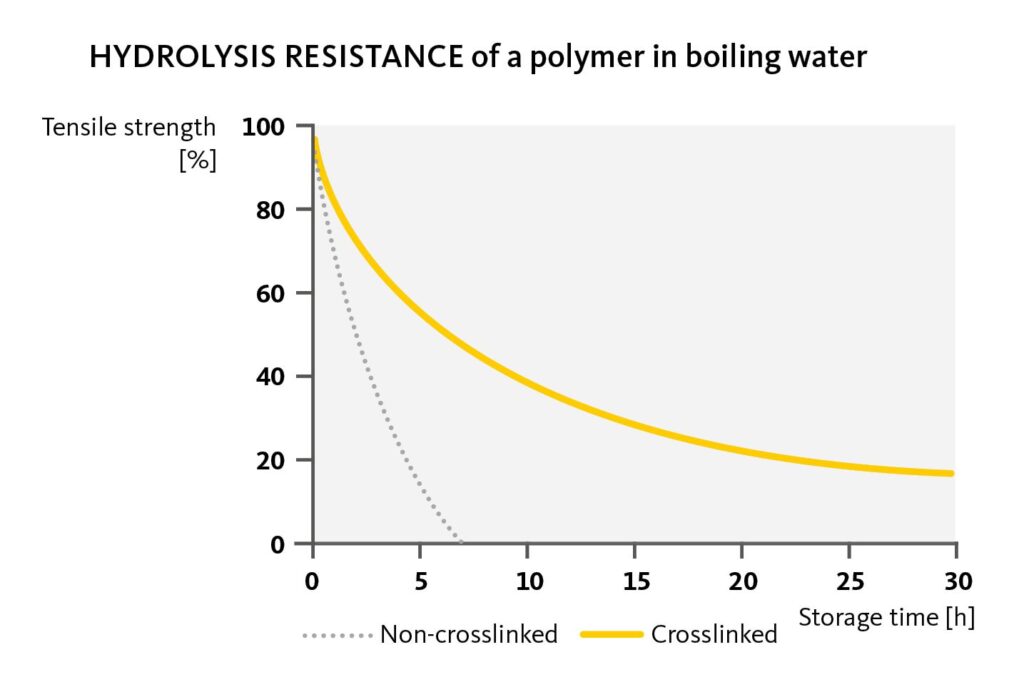
© Beta-Gamma-Service GmbH & Co. KG
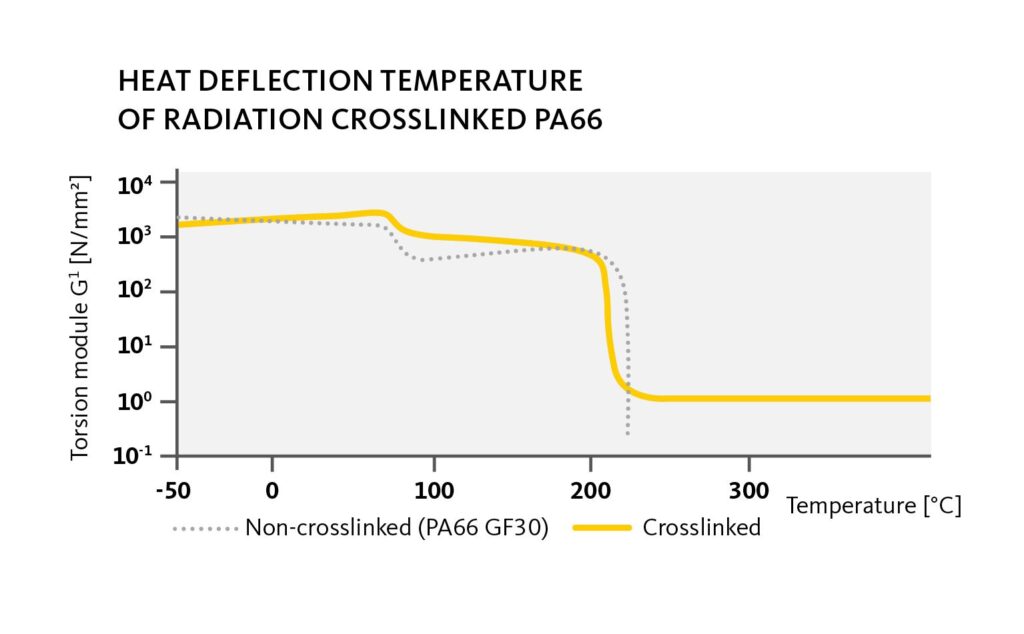
© Beta-Gamma-Service GmbH & Co. KG
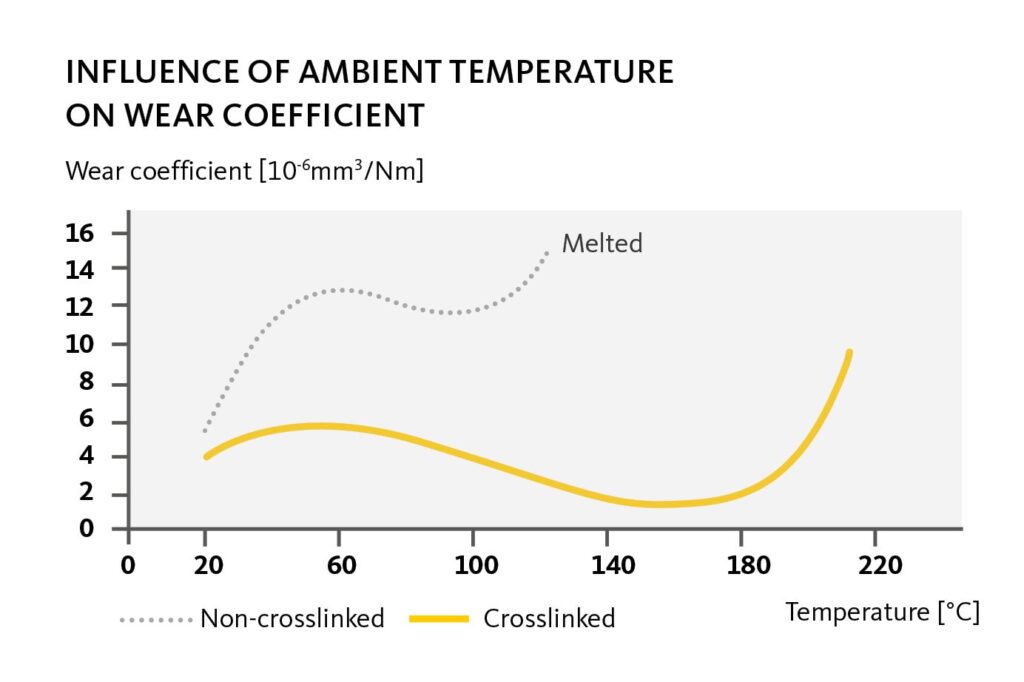
© Beta-Gamma-Service GmbH & Co. KG

